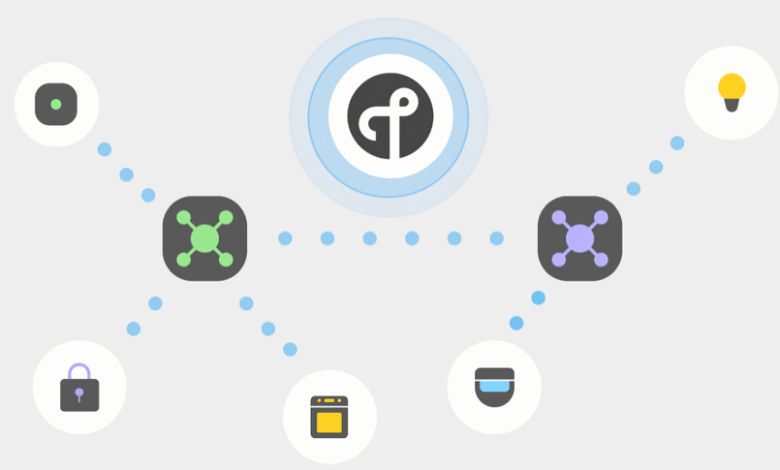Samsung SmartThings Now Supports Existing Thread Networks

▼ Summary
– Samsung SmartThings now supports Thread network credential sharing, allowing its border routers to join existing Thread networks from other manufacturers rather than creating separate ones.
– This capability is part of the Thread 1.4 specification and is launching on select SmartThings hubs, with more to follow, enabling connection via QR codes or one-time passcodes.
– Thread border routers act as gateways for low-power devices in a mesh network, improving range and reliability by allowing multiple routers to share traffic if one fails.
– The Thread Group mandated credential sharing in its 1.4 spec to standardize cross-manufacturer connectivity, addressing previous issues where devices from different brands couldn’t communicate.
– While Samsung and Apple have adopted Thread 1.4, Amazon and Google are still working on implementation, with Amazon planning to enable it next year and Google using mobile OS methods for now.
The smart home ecosystem takes a significant leap forward with Samsung SmartThings now supporting existing Thread networks, moving us closer to a truly unified smart home experience. This advancement allows Samsung devices functioning as Thread border routers to integrate seamlessly into Thread networks established by other manufacturers, rather than creating separate, competing networks. This capability, known as “two-way Thread network unification,” fundamentally changes how different smart home systems interact.
This feature stems directly from the Thread 1.4 specification released last year. Initially, the functionality will be available on specific SmartThings hubs, including the Aeotec Smart Home Hub and its second-generation counterpart. Samsung has confirmed that additional hub models will gain this capability in future updates.
A new “Manage Thread Network” section within the SmartThings app provides the interface for this integration. Users can connect a compatible SmartThings hub to an existing Thread network through several methods: scanning a QR code, entering a one-time passcode, or utilizing their mobile operating system’s credential storage. The same interface also permits adding a third-party border router to a SmartThings-managed Thread network using a QR code or passcode.
Understanding the role of a Thread border router is key. These devices act as gateways for the Thread wireless protocol, which is specifically engineered for low-power smart home devices like door locks, lighting, and sensors. Thread forms the networking backbone for the Matter smart home standard. Border routers are essential for connecting local Thread devices to other networks and the internet. Because this technology can be integrated into common devices like streaming boxes, smart speakers, and Wi-Fi routers, it’s common for homes to accumulate several border routers.
Having multiple Thread border routers enhances both the range and reliability of your smart home network. They create a self-healing mesh; if one router fails, another automatically takes over to maintain the connection for all devices.
The path to this interoperability has been lengthy. When Matter launched in 2022, a significant hurdle remained: no standard method existed for a border router from one brand, such as an Apple TV, to connect with a router from another, like an Eero system. This limitation often forced devices to create separate, isolated Thread networks that couldn’t communicate with each other.
Major manufacturers, including Apple, Amazon, Google, and Samsung, initially promised collaborative solutions but made limited progress. Apple and Google developed their own ecosystem-specific credential sharing using iCloud Keychain and Google Play services, but a universal standard was still missing.
The Thread Group, the consortium governing the protocol, ultimately intervened. Its Thread 1.4 specification made credential sharing a mandatory feature, establishing a standardized process for devices and border routers to join existing networks.
Samsung has now implemented Thread 1.4, and Apple has included it in its latest iOS update for Apple TV and HomePods. However, Apple has not yet activated a user interface for credential sharing, so it’s unclear if the feature is fully operational for its users. Meanwhile, Amazon and Google have not yet deployed Thread 1.4 support, though both companies have stated they are developing it.
Currently, Google Home Thread border routers might connect to existing networks through Google’s mobile OS credential system. Amazon’s Echo devices with Thread capability can only connect to networks created by Amazon or Eero. These Echo devices are still on Thread 1.3, with Amazon planning to enable version 1.4 next year, including credential sharing. Eero, owned by Amazon, has enabled some 1.4 features but does not currently support merging with pre-existing Thread networks.
Progress toward a fully interoperable smart home is undeniable, but the journey illustrates the complexities of unifying competing technological ecosystems. The industry is steadily moving in the right direction, bringing us closer to the seamless smart home experience consumers expect.
(Source: The Verge)
